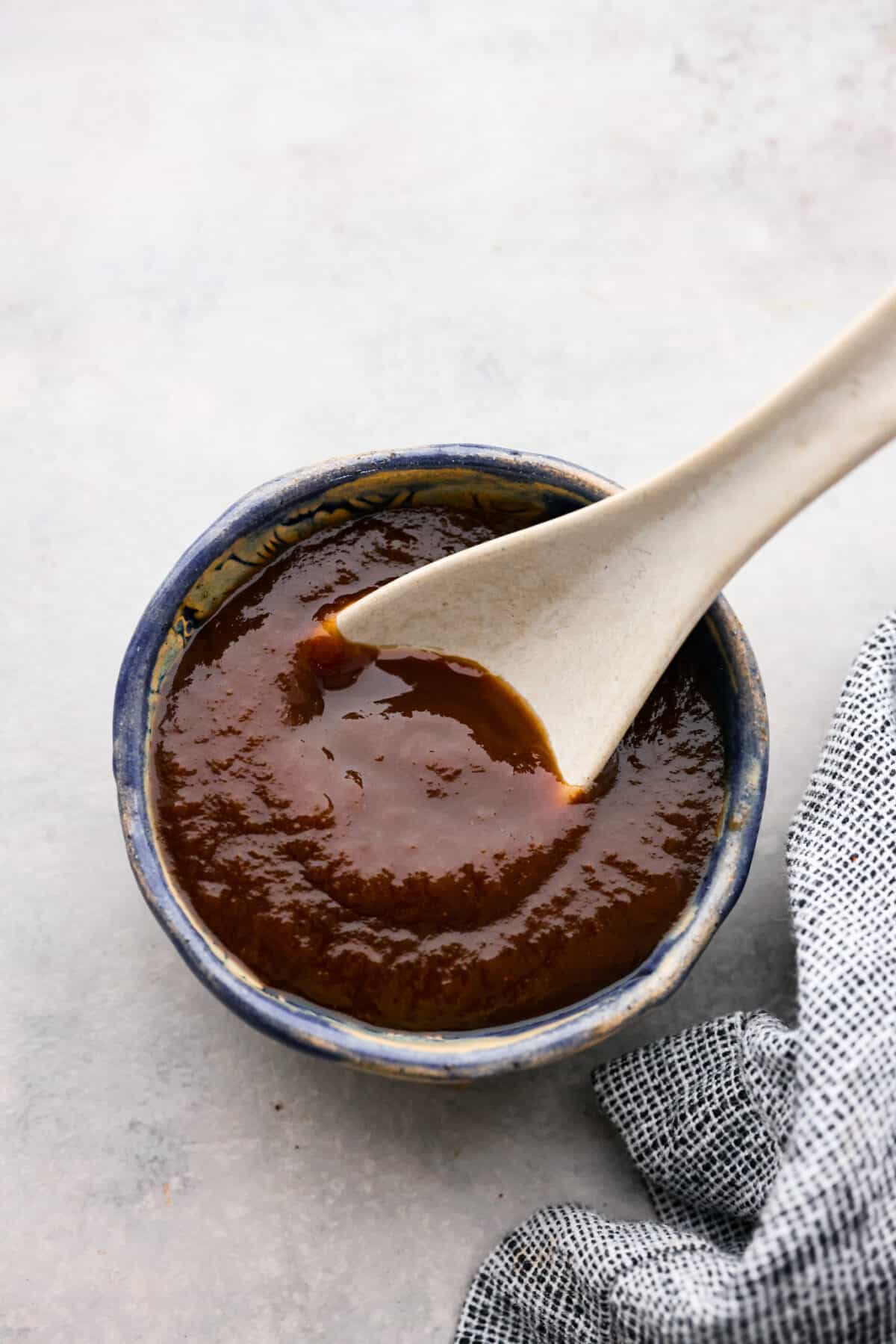This website may contain affiliate links and advertising so that we can provide recipes to you. Read my disclosure policy.
Tamarind sauce is a savory sweet and sour condiment used as a marinade, glaze, or for dipping appetizers. Make this versatile sauce at home and enjoy it with Thai and Indian cuisine.
If you’re looking for more tasty homemade sauces to level up your favorite Asian dishes with then try hoisin sauce, yum yum sauce, or this teriyaki sauce!
What is Tamarind Sauce?
Tamarind sauce has a distinct flavor that you will fall in love with! The base of this sauce uses the pulp of tamarind fruit. The flavor is quite sour before adding the rest of the sauce ingredients. The soy sauce, vinegar, sugar, and spices balance out the sour and help to complement all the flavors of the sauce. It is most commonly served as a dipping sauce for recipes like these tasty samosas. Tamarind sauce can also be used as a marinade, glaze, or drizzled on top of recipes to add a little “zing” to your culinary experience!
You’re going to love this savory, sweet sauce that elevates whatever you serve it on. It’s tangy, thick, and a perfect blend of sweet and spice. Enjoy it as a dipping sauce with tandoori chicken, or drizzled on top of this easy pad Thai recipe!
Ingredients Needed
Tamarind paste is key in creating this sauce, so make sure you have this important ingredient! Find the list of measurements for each ingredient located in the recipe card below.
- Tamarind Paste: Find tamarind paste at the Asian market or online.
- Water: Helps break down the paste as it heats through.
- Soy Sauce: Feel free to use low-sodium soy sauce, just adjust the salt later.
- Apple Cider Vinegar: Adds an acidic tangy element to the sauce.
- Cayenne Pepper: Use more if you like it with a little kick!
- Ground Cumin and Ground Ginger: The combination of cumin and ginger adds to the flavor of this sauce.
- Brown Sugar: Adds sweetness to the sauce and balances out the sour and tangy flavors.
- Salt: Season with salt to taste.
Tamarind Sauce Recipe
Follow my easy-to-follow instructions below to make this homemade tamarind sauce. Plus, it will store well for you to use your homemade sauce over and over again.
- Heat the Tamarind Paste and Water: Add the tamarind paste and water to a medium saucepan and bring to a rolling boil over medium heat. Boil for about 5 minutes, until it is a thick paste. Remove it from the heat then let it cool for a few minutes.
- Strain the Paste Mixture: Use a wooden spoon or a stiff spatula to press the tamarind paste through a fine mesh sieve back into the pan. You should have very thick, sticky pulp left in the sieve and smooth tamarind concentrate in the pan.
- Add the Soy Sauce, Vinegar, Spices, and Sugar: Stir in the soy sauce, vinegar, spices, sugar, and a little salt and pepper to the tamarind concentrate. Simmer for 1-2 minutes, or until the sugar is melted and the sauce is your desired thickness. If it becomes too thick, add water 1 tablespoon at a time until it is where you want it. Taste and adjust the seasonings and sweetness to your liking.
- Cool and Store: Let the sauce cool before transferring it to an airtight container or bottle for storage.
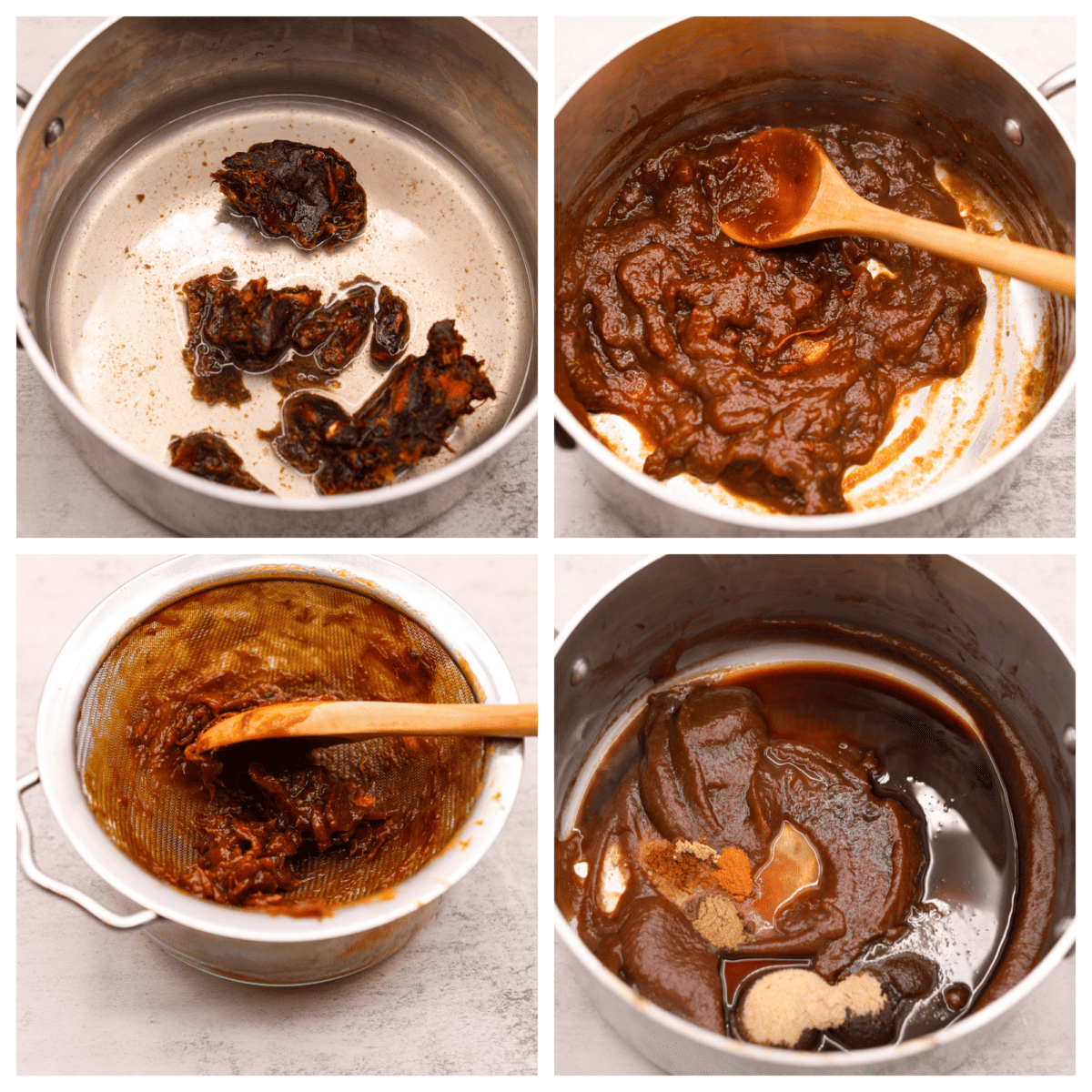
Ways to Customize Tamarind Sauce
Make this tasty tamarind sauce just how you like it with these extra tips and tricks! That’s the beauty of making homemade sauces.
- Make it Sweeter: If you prefer a sweeter sauce then add more sugar. Start with the suggested amount of 2 tablespoons and then adjust accordingly! You can also use honey instead if you prefer.
- Tamarind Paste: You can find tamarind paste in blocks at Asian markets or online. I used this one from Amazon.
- Add More Heat: Want it spicier? Add some chili powder or more cayenne.
- Thin the Sauce: Tamarind sauce can be thinner for dipping or thicker like a chutney. The base for this recipe turns out decently thick, so feel free to thin it down with water if you find it to be too thick.
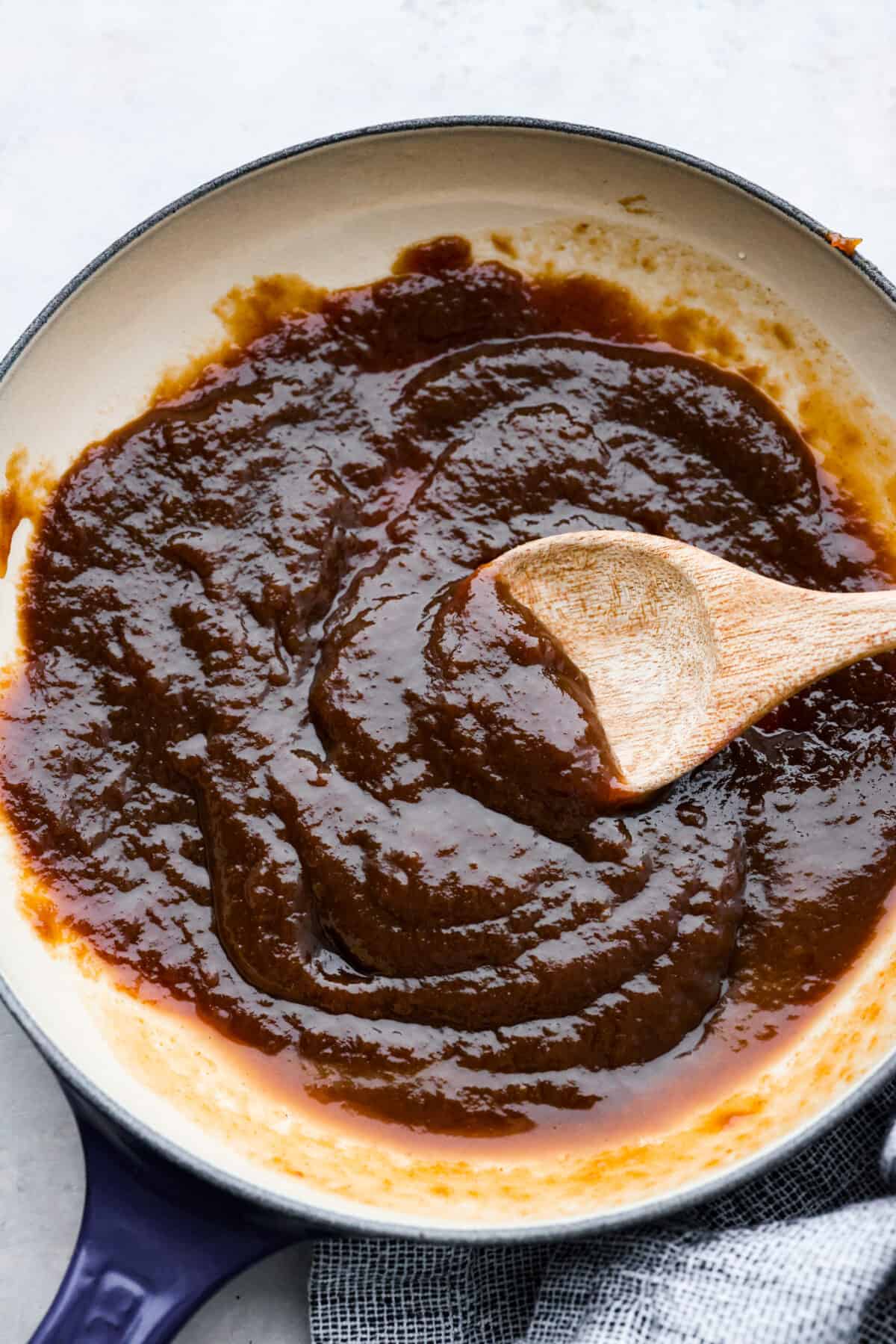
Storing Tamarind Sauce
Make a big batch of this homemade tamarind sauce to use with multiple recipes. Give it a quick stir before you use it again to make sure all the ingredients are fully combined.
- In the Refrigerator: Tamarind sauce will last in the refrigerator for up to 1 month. Store in an airtight container or a condiment bottle.
- In the Freezer: You can pour it into a silicone ice cube tray then freeze it. Then it’s easy to thaw smaller portions for when you need it but don’t want to make a full batch.

More Savory Dipping Sauces
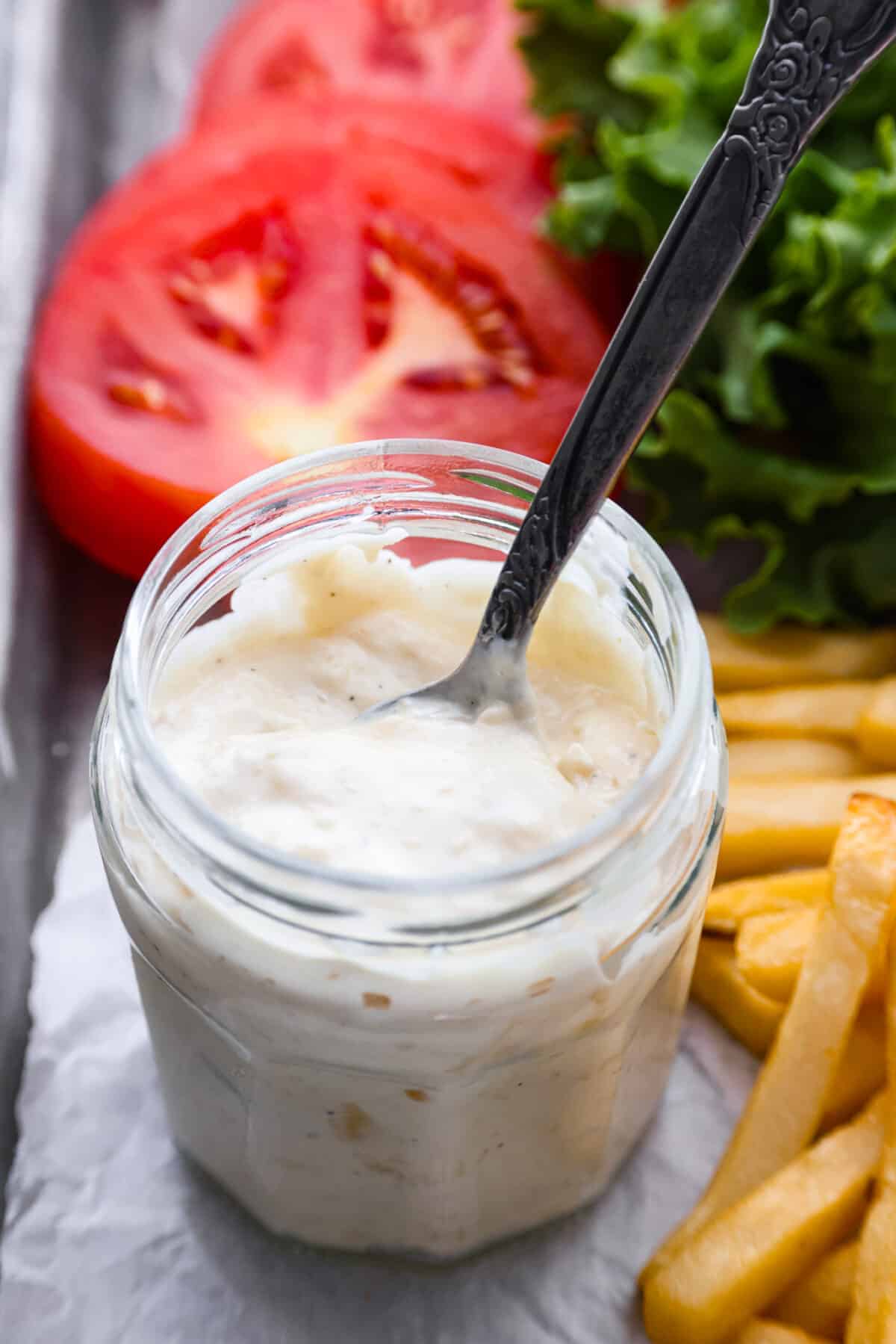
Dressings, Sauces, and Dips
Donkey Sauce
1 hr 5 mins

Dressings, Sauces, and Dips
Philly Cheesesteak Dip
1 hr
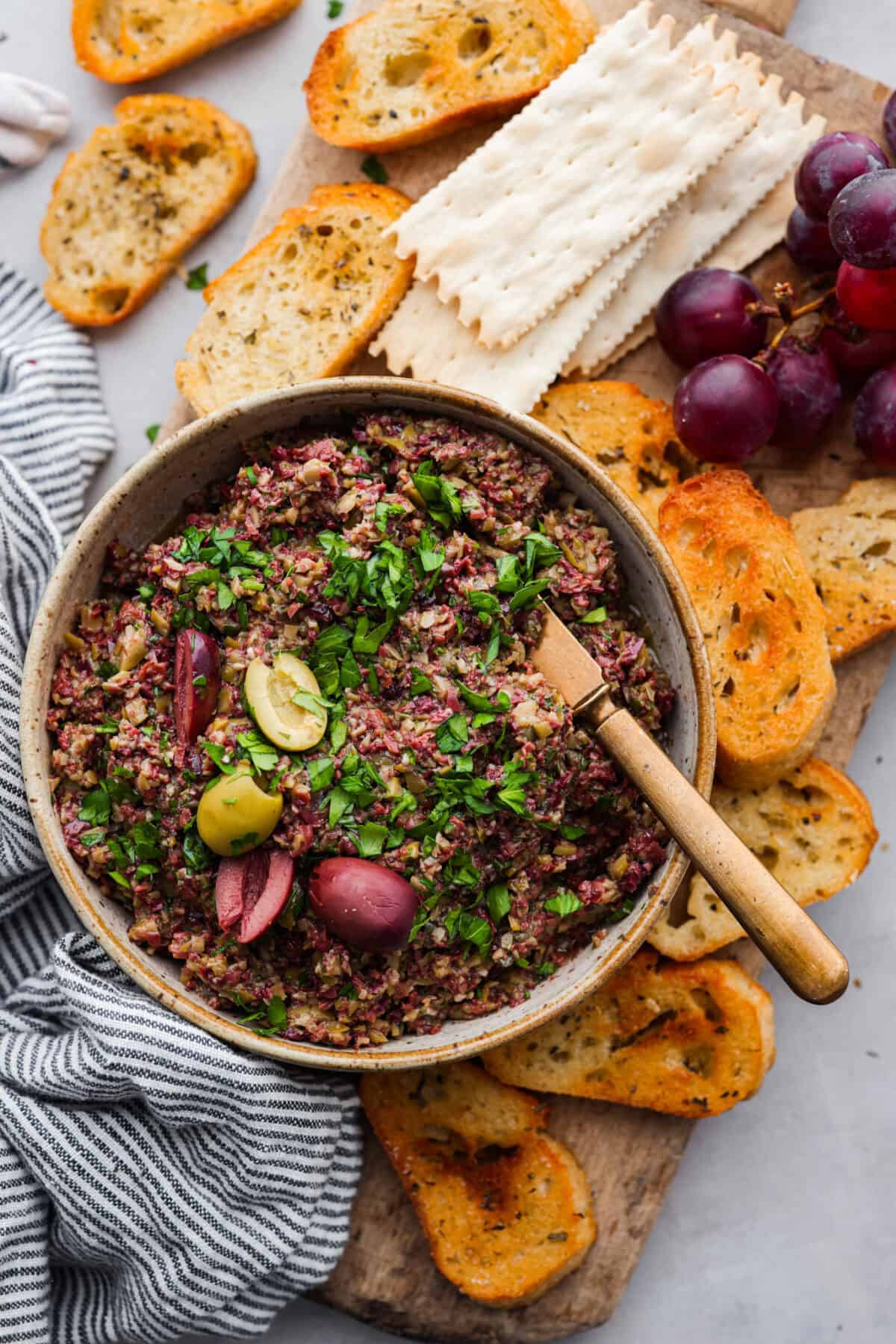
Appetizers
Olive Tapenade
5 mins
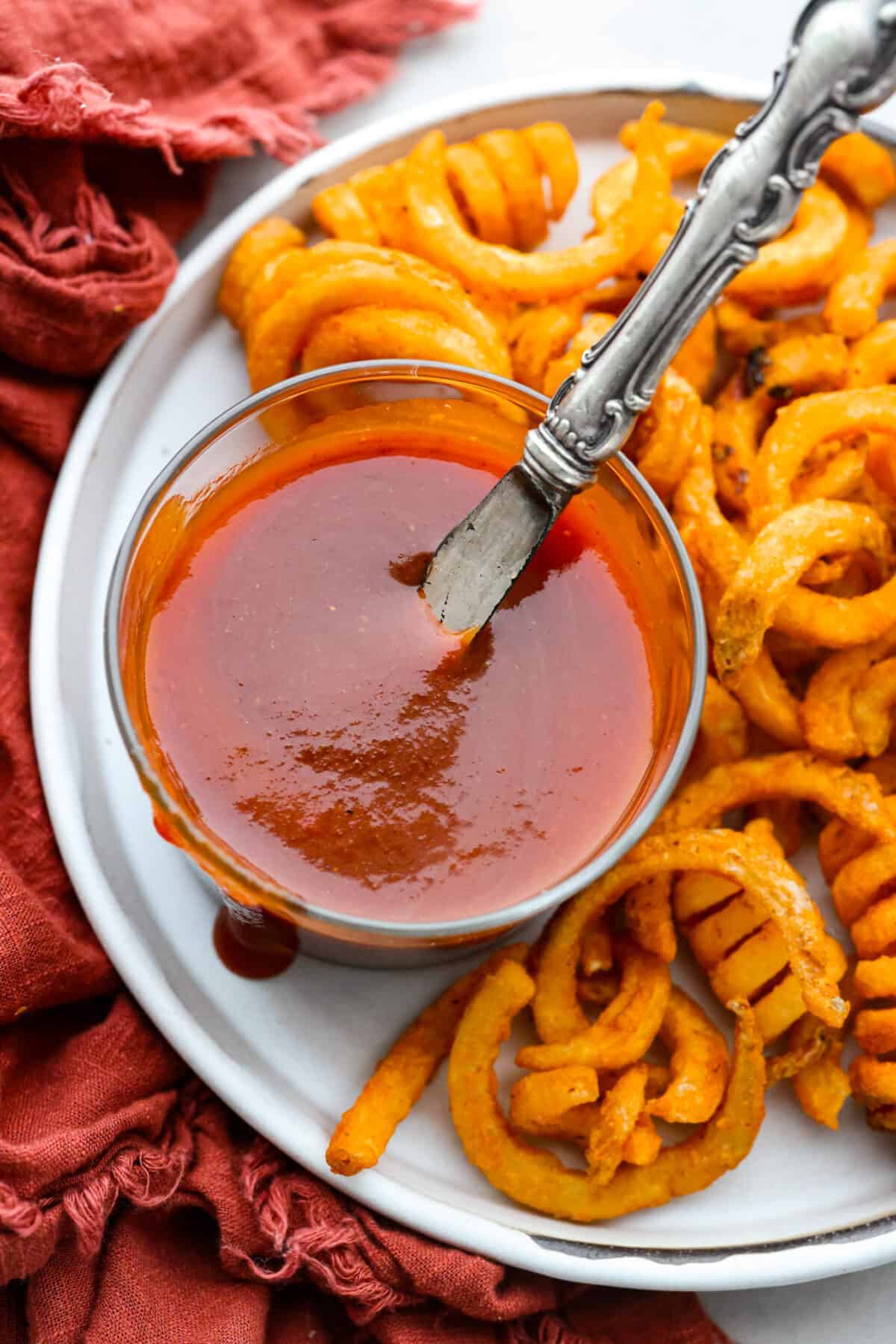
Dressings, Sauces, and Dips
Arby’s Sauce
7 mins
Pin this now to find it later
Pin It
-
Add the tamarind paste and water to a medium saucepan and bring to a rolling boil over medium heat. Boil for about 5 minutes, until it is a thick paste, then remove from the heat and let it cool for a few minutes.
-
Use a wooden spoon or a stiff spatula to press the tamarind paste through a fine mesh sieve back into the pan. You should have very thick, sticky pulp left in the sieve and smooth tamarind concentrate in the pan.
-
Stir in the soy sauce, vinegar, spices, sugar, and a little salt and pepper to the tamarind concentrate. Simmer for 1-2 minutes, or until the sugar is melted and the sauce is your desired thickness. If it becomes too thick, add water 1 tablespoon at a time until it is where you want it. Taste and adjust the seasonings and sweetness to your liking.
-
Let the sauce cool before transferring to an airtight container or bottle for storage.
Serving: 2tablespoonsCalories: 65kcalCarbohydrates: 17gProtein: 1gFat: 0.1gSaturated Fat: 0.04gPolyunsaturated Fat: 0.02gMonounsaturated Fat: 0.04gSodium: 196mgPotassium: 110mgFiber: 1gSugar: 13gVitamin A: 31IUVitamin C: 1mgCalcium: 19mgIron: 1mg
Nutrition information is automatically calculated, so should only be used as an approximation.

